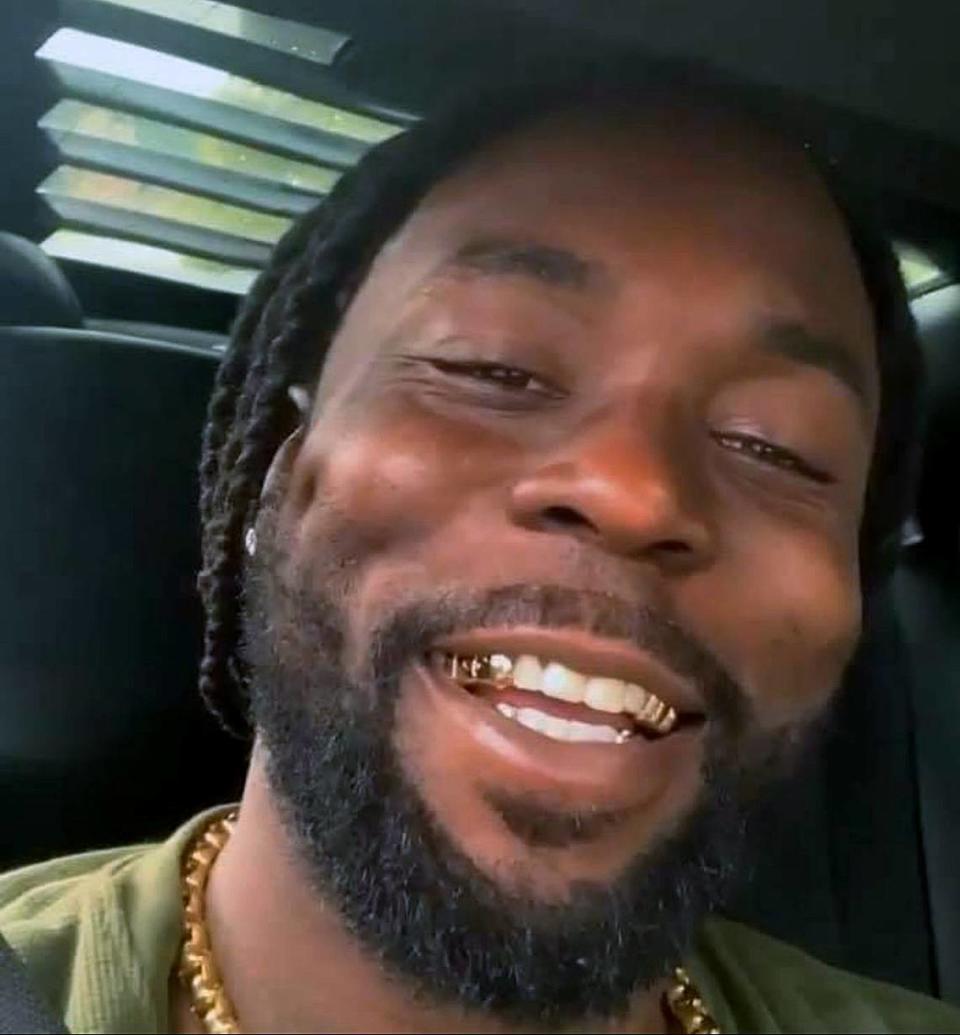A dying Columbus man named his alleged killer, cops say. Will a trial jury hear that?
It was 3:47 on a Wednesday afternoon when patrol Officer Danielle Danforth was sent to a car wreck on Moye Road along Columbus’ eastern border with Fort Moore.
What she found was not just a wreck, though Joseph Dukes had rolled his white BMW convertible off a curve as he tried to drive while bleeding from gunshot wounds.
Danforth’s body camera was recording as he told her who shot him, according to court filings in his alleged killer’s impending murder trial.
“Help me,” he told Danforth and other first responders.
“Yeah, I got shot,” he said. “Deante Caruthers.”
Asked who shot him, he again said, “Deante Caruthers.”
He lost consciousness as an ambulance took him to Piedmont Columbus Regional, where he was pronounced dead an hour later.
That was on Jan. 20, 2021. Police arrested Caruthers the following Feb. 4.
He faces trial Jan. 22 on charges of murder, aggravated assault, using a gun to commit a felony, and having a gun while he was a first offender on probation.
Now 32, Caruthers has a July 7, 2019, conviction for possessing stolen property, court records show.
Prosecutor Austin Hammock has asked that Caruthers be treated as a repeat offender, if convicted, and that the jury hear what Dukes told Danforth the day he died.
Judge John Martin is to hear arguments about Dukes’ last words in a pretrial hearing on Tuesday. Caruthers is represented by Columbus attorney William Kendrick.
Police have other evidence they say shows Caruthers shot Dukes on Bayberry Drive, a subdivision off Buena Vista Road. Dukes was trying to get to his mother’s home when he lost control on a curve, less than a mile away.
He was shot twice in the chest, and had a bullet wound in his back, investigators said.
Hammock wrote in a court motion that Dukes told Danforth of “being shot everywhere” and “bleeding everywhere.”
The other evidence
At least three witnesses saw Caruthers shoot Dukes, and neighborhood security cameras recorded it, Detective Sherman Hayes testified at Caruthers’ first court hearing.
Hayes said the two men were seen “face to face, nose to nose” in the street, before Caruthers stepped back, pulled a pistol and fired three times as Dukes tried to duck away, falling to the pavement.
Police tracked both men’s cell phones, showing the two were “practically on top of each other” on Bayberry Drive, where police found three 9-millimeter shell casings, Hayes said.
A violent year
Dukes was among those killed in a spate of early 2021 violence that continued, marking a recent peak in Columbus homicides with 70 reported that year.
Columbus had 12 slayings by mid-February, six of them in just 12 days.
Dukes’ mother Delilah Dukes was among those interviewed in a Ledger-Enquirer report on the rash of homicides.
Every death in the news meant another mother was grieving, she said.
“It always hurts me when I hear that,” she said. “It just saddens me because a young person is gone.”
Joseph Dukes had three sons and two daughters, and a baby boy was born after his death, she said: “He loved being around kids.”

Columbus murder cases from 2021 now are coming to trial after the courts cleared a backlog caused by the COVID-19 pandemic of 2020, which caused court lockdowns.
The ‘dying declaration’
Because the confrontation clause of the Sixth Amendment says anyone accused of a crime has the right “to be confronted with the witnesses against him,” a judge must decide whether the words of a dying man are admissible in the suspect’s trial.
Dukes cannot be cross-examined, and having another witness testify to what he said could be hearsay, which is inadmissible in most cases.
An exception, as specified in the law, is “a statement made by a declarant while believing that his or her death was imminent, concerning the cause or circumstances of what the declarant believed to be impending death.”
The prosecution argues Dukes “was clearly aware of his imminent death, as shown by his condition and his statements,” so what he told Danforth was a “dying declaration” excluded from the prohibition on hearsay.
“Georgia courts have long recognized that, ‘the admission of dying declarations does not contravene that provision of the constitution of the United States which declares that in all criminal prosecutions, the accused shall be confronted with the witnesses against him,” Hammock wrote.

